Epson Network Scan Module Handleiding
Bekijk gratis de handleiding van Epson Network Scan Module (5 pagina’s), behorend tot de categorie Scanner. Deze gids werd als nuttig beoordeeld door 97 mensen en kreeg gemiddeld 3.6 sterren uit 49 reviews. Heb je een vraag over Epson Network Scan Module of wil je andere gebruikers van dit product iets vragen? Stel een vraag
Pagina 1/5

Color in Communicaon: Color Light Output White Paper
Michael Goldstein, MSG Communicaons
“Why do two colors, put one next to the other, sing? Can one really explain this? No. Just as one can
never learn how to paint.” Pablo Picasso
Introducon
Pablo Picasso is only one of many who pay tribute to the importance of color. For designers and
purchasers of products like cars, computers, and cell phones, color is a major consideraon. Color is a
crical element in the communicaon of informaon. According to an American Psychological
Associaon study, The Contribuons of Color to Recognion Memory for Natural Scenes, by hanging an
extra “tag” of data on visual scenes, color helps us to process and store images more eciently than
colorless (black and white) scenes, and as a result, to remember them beer. And when informaon is
projected in business boardrooms and children’s classrooms around the world, color plays an important
role in geng key messages across.
The data projector market has been in existence for more than two decades, with almost 60 million
projectors sold for use in schools, theaters, homes and businesses. Yet, while superior image quality and
brightness have consistently ranked at the top of lists, there has been no standardized buyer’s wish
specicaon to measure the color performance of projectors.
Use of color can draw aenon to important areas of text, a factor oen crical in business and other
presentaons. Studies done by the Pantone Color Instute indicate that “consumers are up to 78
percent more likely to remember a word or phrase printed in color than in black and white.” Further,
“When color is combined with the written word, it impacts readers with…greater recall, recognion and
aenon.”
Similarly, research conducted by Xerox in 2003 found that among business owners:
83 percent believe color makes them appear more successful
81 percent think color gives them a compeve edge
76 percent believe that the use of color makes their business appear larger to clients
Clearly, with color important to eecve so communicaon, most people don’t need to be sold on the
importance of Color Brightness in projected presentaons. Yet while current specicaons give
informaon on b htness (or White Light Output), contrast rao and resoluon, they shed no light on a rig
projector’s ability to reproduce and project bright, rich and accurate colors. Consumers, even
sophiscated informaon technology buyers, have not unl now had a metric to help them understand
what they can expect their projector to provide in terms of color.

A World of Color
Data projectors are no longer just a simple substute for the venerable overhead projector, with its
black lines and simple charts laid upon a transparency. Yet our thinking about the value of projectors,
parcularly in business and educaonal sengs, has not advanced far beyond that.
To many, the words “projector” conjures a dull presentaon. But up that’s an outdated mindset. What
began as a tool for pung black and white words and simple color charts and graphs onto slides has
evolved into a media-rich plaorm, supporng video, audio, animaons and photographs. And
presentaon programs just one paint source on the palee of choices business and educaon are
professionals can now use to tap into the power of color.
Indeed, nearly anything that a computer can store on its hard disk, play from its DVD drive or access
from the Internet can be projected in living color. A short and not very exhausve list would include
online videos, corporate, educaonal and personal websites, personal and corporate blogs, short
message feeds with photos, images from photo sharing sites, streamed full-length lms and television
shows, and many other sources.
Such rich, high-denion content has made the quality of the color produced by a projector extremely
important, regardless of whether it is meant for home, business, or classroom use.
Considering this universe of color-based content, potenal purchasers can evaluate projectors using a
number of specicaons. These include white brightness contrast rao, (the difference between the
brightest part of the image and the darkest), and (such as XGA or SXGA, measured in pixels). resoluon
For most users, the key to determining the capability of a given projector to successfully present vibrant
images is the projector’s brightness, measured in lumens. In general, the higher the number of lumens,
the brighter the projector. One of the many reasons brightness is important in business and educaon
projector is the frequent need to project in conference rooms and classrooms with the lights on.
Considering the overwhelming use of color in today’s presentaons, the ability for a projector to project
color at a brightness equal to its projecon of white light is crical. Yet the widely-used lumens
specicaon measures only white light, a fact unknown to more than 70 percent of projector buyers,
according to a recent TFCinfo Associates study. And unfortunately, in more than 50 percent of
projectors sold today, Color Brightness is substanally lower than White Light Output.
Even sophiscated informaon technology buyers oen have no idea that the lumens specicaons
refer only to the output of white, rather than colored, light. Unl the arrival of the new Color Light
Output specicaon, buyers had no way to determine if a projector was capable of producing the bright,
vivid color they demanded. In the digital era, where online ordering is the norm, the ability to evaluate
the color quality of a projector on specs alone, without seeing it in acon, is imperave.

The New Color Standard
Faced with absence of reliable color informaon from projector users and purchasers, in 2009 the
Naonal Instute of Science and Technology (NIST) issued a scienc paper on Color Brightness. It
stated that in addion to the typical white light brightness rang of display devices, there was a need to
provide "an equivalent measurement that will beer describe a projector's color performance when
rendering full color imagery.”
After extensive research and evaluaon, the Society for Informaon Display (SID) concluded that a color
brightness standard was relevant the display industry. This sciencally valid measurement tool in
(referred to by the SID as Color Light Output), is designed to provide consumers with a specicaon to
allow them to easily evaluate color brightness, a crical aspect of image quality.
The Internaonal Commiee for Display Metrology (ICDM), a division of the SID, was tasked with
developing the new standard. Composed of display experts, electrical, mechanical, soware and opcal
engineers, physicists, vision sciensts, and professionals in many display-related disciplines, the ICDM,
along with the Video Electronics Standards Associaon (VESA) worked for two years to create the
Internaonal Display Measurement Standard, or IDMS. Released in May, 2012, the comprehensive
IDMS publicaon provides measurement methodologies for displays, including projectors, and for the
rst me, included Color Light Output.
Color Light Output (CLO), also known as Color Brightness, is a specicaon that provides informaon on
a projector’s ability to accurately reproduce color. Current brightness specicaons only measure the
total amount of white light projected, as stated in lumens. The new lor ght Output or Color Co Li
Brightness specicaon measures red, green, and blue light, tesng each on a nine-point grid, using the
same methodology as that used to measure the brightness of white light .
The electronic version of the IDMS is available on the ICDM website (hp://www.icdm-
sid.org/downloads/) and includes test patterns, reporting templates, and other ulies for the new
Display Measurement Standards .
Understanding Color Light Output
Projector manufacturers typically provide informaon about resoluon, White Light brightness and
contrast rao as metrics to dene projector performance. But as none of these specicaons directly
address a projector’s color performance, the Color Light Output metric complements exisng
specicaons and gives buyers an accurate way to evaluate compeve models more thoroughly.
Measured using a similar approach to the tests for White Light Output, Color Light Output provides a
simple, accurate and easy- -to understand metric to evaluate a projector’s color brightness .
The tradional brightness (or White Light Output) specicaon measures the total amount of white light
projected in lumens on a nine point grid, but it does not measure color.
Product specificaties
| Merk: | Epson |
| Categorie: | Scanner |
| Model: | Network Scan Module |
Heb je hulp nodig?
Als je hulp nodig hebt met Epson Network Scan Module stel dan hieronder een vraag en andere gebruikers zullen je antwoorden
Handleiding Scanner Epson

14 December 2024

14 December 2024

21 November 2024

25 September 2024

8 April 2024

28 Augustus 2023

28 Augustus 2023

28 Augustus 2023

26 Augustus 2023

26 Juli 2023
Handleiding Scanner
- Reflecta
- Konica Minolta
- Nedis
- Doxie
- Martin
- Veho
- I.R.I.S.
- ICarsoft
- Fujitsu
- Vupoint Solutions
- Elmo
- Zolid
- Hella
- Tevion
- Traveler
Nieuwste handleidingen voor Scanner
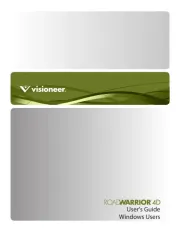
16 September 2025
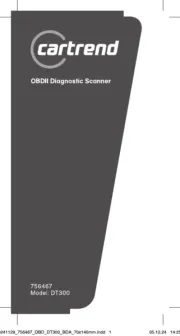
1 September 2025

9 Augustus 2025

7 Augustus 2025
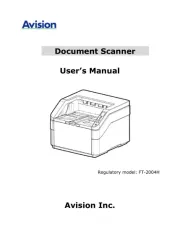
4 Augustus 2025
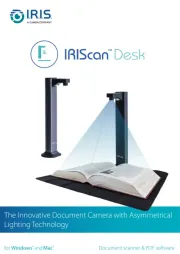
4 Augustus 2025
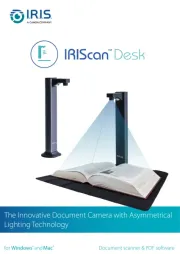
4 Augustus 2025

30 Juli 2025

29 Juli 2025
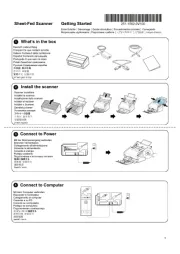
29 Juli 2025